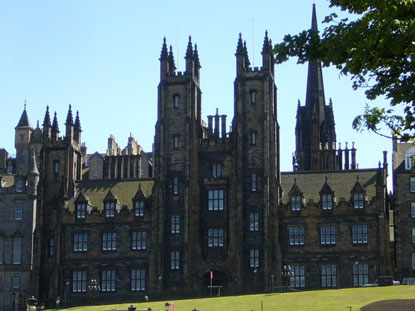Scotland’s universities would take 40 years at their current rate of progress to widen access to the levels demanded by ministers in return for increased funding, according to the National Union of Students.
 Drawing on Scottish Funding Council figures, secured under the Freedom of Information Act, NUS Scotland calculates that the proportion of students from the poorest 20% of backgrounds has risen by just 1% in the past five years.
Drawing on Scottish Funding Council figures, secured under the Freedom of Information Act, NUS Scotland calculates that the proportion of students from the poorest 20% of backgrounds has risen by just 1% in the past five years.Were that rate of change to continue, they say, it would be 2050/51 before anything close to a fifth of Scottish students coming from the poorest fifth of the population.
Across the 19 higher education establishments in Scotland, there are 2.5 students from the richest tenth of the population for every 1 from the poorest tenth.
But the average masks huge variations. St Andrews University has 28 students from the wealthiest 10% of the population for every one from the poorest 10%, while only the Paisley-based University of the West of Scotland has more students from the most deprived 10% (576) than from the most advantaged (318).
The inequality is also evident in geographical entry rates to higher education. More than 68% of school leavers in the well-heeled Renfrewshire constituency of Eastwood go into HE, compared with 24.9% just a few miles away in Glasgow Provan.
Yet the NUS says the figures show that those from the poorest backgrounds perform at least as well in HE as those from the wealthiest, even where entry criteria are adjusted for people from deprived backgrounds – as in several English universities.
Robin Parker, NUS Scotland president, said the most positive finding was that the universities knew which initiatives to widen access worked. He urged the Scottish Parliament to introduce enforceable agreements with the universities to provide differential routes to entry and other access-widening measures.
But Universities Scotland said that all universities were now committed to widening access, and would have new outcome agreements negotiated with the SFC ready for the coming academic year. These will include the fairer access aspirations raised by Scottish Education Secretary Michael Russell last year when he set out the higher education package. Director Alastair Sim offered talks next week to update the NUS.
He cautioned against putting too much stress on a single access measure, saying that widening university access was ‘inextricably linked’ to the need to address the effects of deprivation from nursery level upwards.
‘Ultimately it is about creating opportunities for individuals not postcodes or data-zones,’ he said.




















